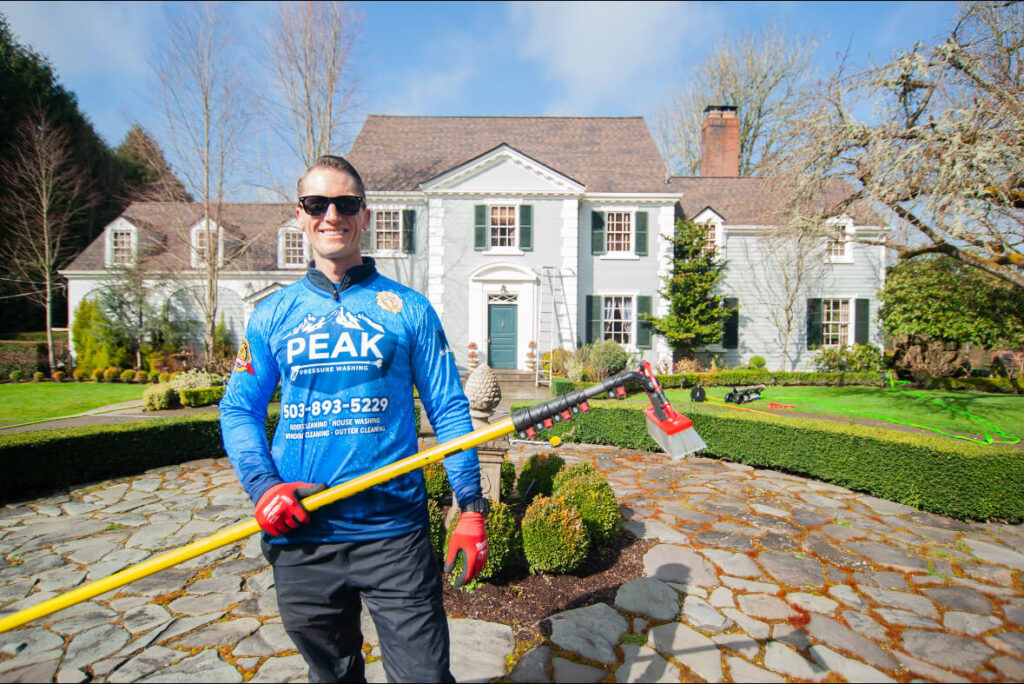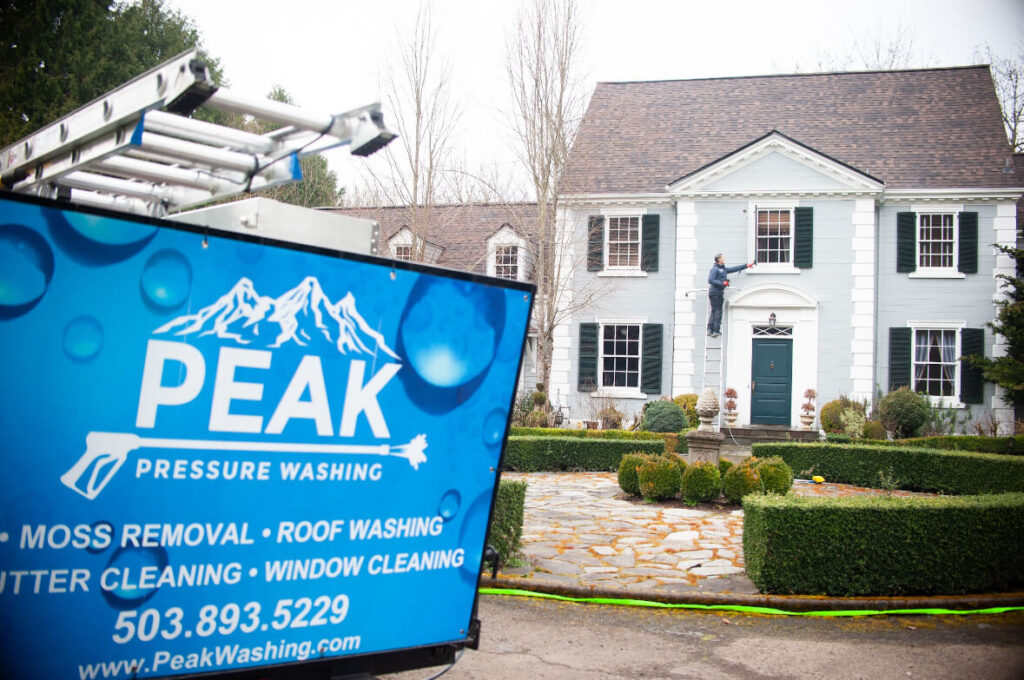Key Takeaways
- Preparing your home correctly ensures a safer, more effective pressure washing experience.
- Simple steps like sealing windows, covering plants, and removing loose items make a big difference.
- Avoid structural damage by checking for cracks and using proper techniques.
- Hiring experienced professionals minimizes risk and improves results.
- Peak Pressure Washing offers reliable, detail-oriented services tailored for Oregon homeowners.
Pressure washing can restore your home’s exterior, boost curb appeal, and prepare surfaces for painting or repairs. But without the right preparation, it can also lead to water damage, structural issues, or missed spots. If you’re planning a pressure washing session, whether for your siding, roof, or driveway, preparing ahead of time is the key to success.
This guide will walk you through essential steps to make sure your home is ready for pressure washing—and help you get the most from the service.
Why Pressure Washing Preparation Matters
Many Oregon homeowners underestimate how much prep goes into a successful pressure washing job. Beyond simply clearing the area, proper preparation helps:
- Prevent water damage to siding, windows, and doors
- Protect delicate landscaping and outdoor décor
- Avoid unnecessary repairs from high-pressure damage
- Improve final results by allowing cleaning agents to work effectively
In a damp, moss-prone climate like Oregon, even small gaps or oversights can result in mildew regrowth or hidden moisture damage. A well-prepared home is safer, cleaner, and easier to maintain long-term.

Step-by-Step Guide to Preparing Your Home
1. Clear the Area
Move outdoor furniture, toys, grills, potted plants, and décor at least 10–15 feet away from the house. This gives technicians a safe, clear path and prevents water damage to your belongings.
2. Cover and Protect Plants
Use tarps, drop cloths, or plastic sheeting to cover shrubs, flower beds, and sensitive plants near the home’s perimeter. Trim back any branches touching the house.
3. Seal Openings
Double-check that all windows and doors are tightly shut. Use weatherproof tape or plastic to cover vents, mail slots, or exposed electrical outlets.
4. Inspect for Damage
Check for loose siding, cracked mortar, or damaged shingles that could worsen with pressurized water. Caulk small cracks and make temporary fixes if needed.
5. Secure Loose Fixtures
Gutters, downspouts, window shutters, and loose light fixtures should be secured or temporarily removed to avoid damage.
6. Remove Window Screens
Take out screens before cleaning. Not only does this prevent damage, but it ensures better access to window glass.
Preventing Common Pressure Washing Problems
Knowing the risks helps you avoid them. Here’s what to watch for:
- Water Intrusion: Always seal doors and windows. Pay special attention to basement window wells and foundation cracks.
- Plant Damage: Even plant-safe detergents can burn leaves if sprayed directly. Always cover your greenery.
- Surface Damage: High pressure can harm wood, aged brick, or peeling paint. Adjust pressure or request a soft-wash alternative.
- Electrical Risks: Avoid spraying near outlets, outdoor lighting, or power lines. Shut off outdoor circuits if necessary.
These precautions reduce your chances of unexpected damage and ensure a smooth cleaning process.
Expert Tips for a Smoother Experience
- Schedule strategically: Late spring or early fall is ideal in Oregon—before heavy rain or falling leaves return.
- Communicate clearly: Point out problem areas to your technician ahead of time.
- Ask about eco-friendly cleaners: Biodegradable formulas are effective and safer for plants and pets.
- Document before and after: Photos help track the transformation and are useful if your HOA requires records.
These tips make your cleaning session more efficient and help professionals do their best work.
When DIY Isn’t Enough: Why Hire a Professional
While DIY pressure washing is an option, it often comes with risks:
- Wrong pressure settings can destroy siding or push water behind walls
- Lack of safety gear increases the chance of injury on ladders or wet surfaces
- Inexperience may cause missed spots or water damage
Peak Pressure Washing brings experience, commercial-grade tools, and expert knowledge to every job. Our technicians understand Oregon’s unique climate and tailor their approach to your home’s materials and vulnerabilities.
Hiring a professional not only saves you time—it protects your investment.
Common Preparation Issues and Fixes
Low Water Pressure?
Check hoses for kinks or blockages. Clean nozzles and ensure water lines are fully open.
Loose Paint or Cracked Mortar?
Point these out beforehand. Soft washing may be a safer alternative.
Unstable Ground or Sloped Terrain?
Ensure ladders and scaffolding are set up securely or leave it to the pros.
Debris in Gutters or Roof Valleys?
Consider bundling services—roof, gutter, and siding cleaning together often costs less than individual visits.
Frequently Asked Questions
How long does it take to prepare a home for pressure washing?
Anywhere from 30 minutes to a couple of hours, depending on your home’s size and how much needs to be moved or protected.
Do I need to be home during the process?
It helps, but isn’t always necessary. Just make sure access is granted and pets are indoors.
Will pressure washing damage my paint?
Not if done correctly. Soft washing is used on delicate or painted surfaces to avoid chipping.
How often should I pressure wash my home?
Once a year is common in Oregon. More frequent cleanings may be needed if you live near trees or in high-moisture areas.
Does Peak Pressure Washing help with prep?
Yes! Our team can handle essential prep work and will walk you through what needs to be done beforehand.
Proper preparation is the foundation of any successful pressure washing job. With the right steps—and the right partner—you can restore your home’s beauty while avoiding damage and costly mistakes.
Peak Pressure Washing is ready to help Oregon homeowners tackle pressure washing with confidence and care.

